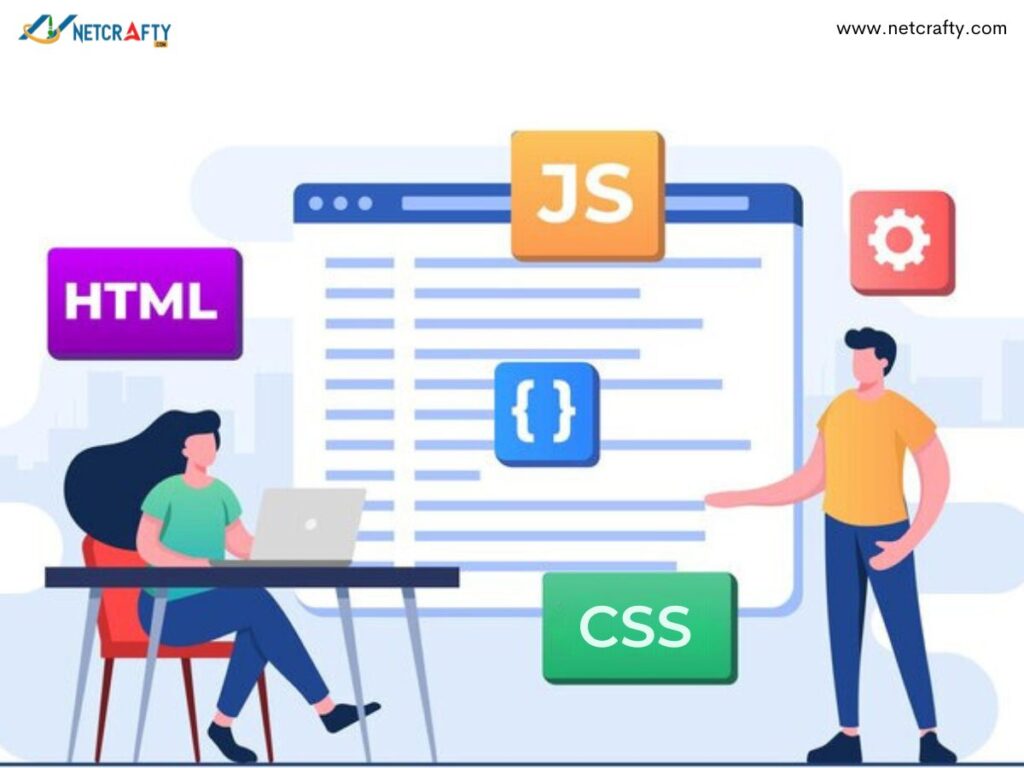Front-end or client-side development creates a website or online application’s User Interface (UI). It determines how a website will look and perform overall. The user interface (UI) comprises the application’s visual components and user interface. The front end is responsible for website development, including the many button styles and other UI elements, media, messages, forms, animations, and more.
Beginners seeking to get into front-end programming are frequently confused by the abundance of front-end tools and frameworks since they don’t know what they need to learn. We will discuss the entire front-end developer plan for 2024:
Who is a Front-end Developer?
A front-end developer is a software engineer who focuses on front-end development. In addition to creating the user interface, they ensure that speed and scalability are met and that functionality and design are balanced. They also provide the website loads properly across platforms, on various mobile, tablet, and computer screens, and across all browsers (cross-browser and cross-platform).
Registering for the top Full Stack Development course, you can become a Front End Developer.
Fundamentals of Front-end Developer Roadmap for 2024
HTML, CSS, and JavaScript are the bare minimum of abilities required to begin working with front-end development projects. To succeed as a front-end developer in 2024, you must master various technologies besides these three.

- HTML- Hyper Text Markup Language
- Every HTML document should begin with the declaration to tell the browser what kind of content it should anticipate.
- The beginning and conclusion of an HTML structure are indicated by the opening tag () and closing tag ().
- The meta data or website information is contained in the “head” tags ( and ). Some metadata is information for the browsers alone; not all are shown on the page.
- The titles of your website that appear on the browser tab are determined by the opening and closing “title” tags (
and ). - The components that the screen will display are contained in the content that lies between the opening and closing body tags (…).
- The content is formatted using the “h1”, “h2”, “p”, and “i” tags.
- The “Click Me!” button is made with the “button” tag.
- CSS – Cascading Style Sheets
- JavaScript
- DOM Manipulation
- How the Web works
- Responsive Design
Hypertext Markup Language is known as HTML. It serves as the foundation for all websites. It lays forth the general format and content of a website. The elements, buttons, images, sliders, date pickers, text lists, etc., are all used in HTML.

In the above coding:
Cascading Style Sheets, or CSS for short, are used to add styles—such as colour, fonts, layouts, and animations—to the pages of your website. To ensure that consumers have a flawless experience seeing your website on devices of all sizes, you may use CSS to create responsive websites that can alter their layout and designs based on the resolution and orientation of the device. You can style more than one element at once with CSS. To target HTML elements, we want to style them using the tag, class, and id selectors. Then, by using these selectors, we can create style rules that include values for various properties along with a property name, such as “font-size,” “background-color,” “margin-left,” etc.

After our website has been laid out using HTML and styled with CSS, the following step is to add actions. JavaScript is the programming language used for this. The JavaScript programming language enhances your website’s interaction. JavaScript is also used to build dynamic UI elements. JavaScript enhances your website’s functionality. Such as when a button is clicked to open a menu, when the progress bar is updated, when you click the “Login” button to verify your identity and submit a request to an authentication service with your username and password, etc. JavaScript enables your website to react to user activity on the page.
You may easily construct web pages with static layouts using HTML. On the other hand, you might have to create dynamic web pages with an adjustable layout. For instance, you might want to change aSn element’s CSS style only after an event takes place, or you might want to add, remove, or amend HTML components after the page has loaded.
The Document Object Model (DOM) API is a collection of APIs that handle HTML and stylistic information. You can use these APIs to perform dynamic manipulations of your webpage. Manipulating the DOM will let you create applications that can update the page’s layout or data without requiring a page reload. It is possible to manipulate the DOM using JavaScript.
You should understand the fundamentals of web protocol and how various web protocols function as a front-end developer. A basic comprehension of DNS (Domain Name System), how clients and servers communicate with one another, and the elements that make up a website as code files and assets are beneficial. Even if it’s not necessary to fully understand every communication protocol, having a fundamental understanding of them will help you create safe websites, which are essential in today’s world. Two secure communication protocols you should be aware of are HTTPS and SSL.
Responsive design is a crucial concept in front-end development. Making websites that work on all kinds and sizes of devices is known as responsive web design. Today’s users access websites from various devices, including smartphones, tablets, laptops, and large-screen PCs, so creating flexible interfaces is crucial. The look and layout of the website can be adjusted based on the device and screen size by utilizing CSS Media Queries. The elements on a website can be automatically resized, hidden, shrunk, or enlarged thanks to responsive design.

Leave a Reply